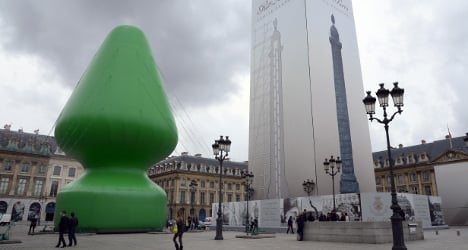Vandals have sprayed paint on a controversial sculpture in the grounds of the Palace of Versailles that has become known as the “queen's vagina,” the estate's management said on Wednesday.
“Damage to the work 'Dirty Corner' was discovered Wednesday morning. It was lightly sprayed with paint. The work is being cleaned,” management said.
The 60-metre (200-foot) long, 10-metre (33-foot) high steel-and-rock abstract sculpture, by British-Indian sculptor Anish Kapoor, resembling a funnel in the form of an orifice, is set up in the garden aimed directly at the royal chateau, which attracts five million tourists a year.
The artist expressed his dismay on Thursday and lamented an “intolerance” towards art in France.
“What a tragedy. How sad,” Kapoor told Le Figaro newspaper.
“You have to put this in perspective. If this act of vandalism says something, it's that there is a certain intolerance in France towards any kind of art.”
He added that the it was more of a “political problem than anything else”, carried out by what he said appeared to be a small but vocal minority.
“I hope it's just a small group of people whose voice is drowned out by the others. It's a very sad phenomenon,” he added.
Inside the palace itself is a smaller work — a cannon that fired red wax at white walls, symbolising a phallus and an ejaculation of blood.
Some French media outlets have expressed unease at the level of provocation unleashed by British-Indian sculptor Anish Kapoor who has described the piece as “the vagina of a queen who is taking power”.
No one has claimed responsibility for vandalising the sculpture.
French Culture Minister Fleur Pellerin said the vandalism was “an attack on the freedom to create” and stressed “all my support to the artist.”
SEE ALSO: When art and sex collide in France to cause a stir




 Please whitelist us to continue reading.
Please whitelist us to continue reading.
Member comments